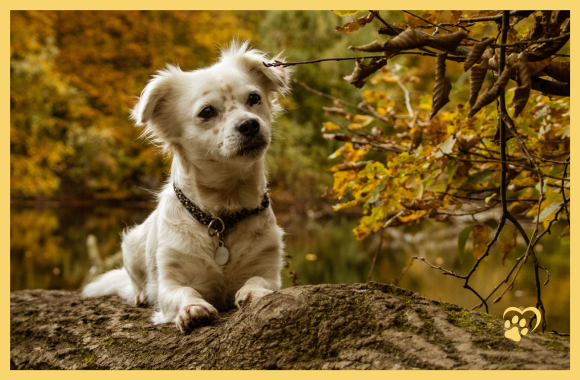Clever, nimble and always one step ahead - is that how you describe your four-legged friend? And sometimes he seems to play tricks on you during training? You are not alone in this. Many owners of highly intelligent dogs stumble over the same hurdles. We reveal the 10 most common training mistakes. So before you start wondering once again why your smart companion just won't learn that one trick, take a moment to read our tips.
Mistake number 1: You are not consistent
In dog training, consistency is the key to success. Remember: your smart dog is a master of pattern recognition. He watches you closely and learns from your every action. If you allow him to jump on the sofa today, but scold him for it tomorrow, it will cause confusion. He will ask himself: "What does my human actually want from me? For your dog, it's like a set of rules that is constantly changing. Imagine playing a game where the rules are constantly changing. Frustrating, isn't it? That's how your dog feels, too.
By being inconsistent, you not only create confusion, but also risk losing your dog's trust. In short, consistent behavior helps your clever four-legged friend understand what is expected of him. And that means less stress and more training success for both parties. So the next time you think "just this once" is fine - think about how it might affect your dog.
Mistake number 2: you underchallenge your dog
Your dog looks at you with those curious eyes and seems to say, "What's new today? Highly intelligent dogs are true thinking acrobats and love to be mentally challenged. But this is often where the problem lies. Many owners underestimate how much mental stimulation their smart four-legged friend really needs. A simple ball toss in the park? That may be the highlight of the day for some dogs, but your smart companion needs more! Under-exercise can lead to boredom, and boredom often leads to undesirable behavior. Be it chewing on furniture, excessive barking, or other naughty behavior.
If you're wondering why your dog is behaving this way, the answer may be simpler than you think: he's underchallenged. Just like a highly gifted child who is bored at school, your highly intelligent dog needs tasks and challenges that are appropriate for his level. Training exercises that challenge the body and mind, puzzle games, and brain teasers for dogs can work wonders. Do not underestimate your dog's need for mental stimulation.

Mistake number 3: You set expectations too high
Smart dogs impress. With their quick thinking and eagerness to learn new tricks, you might think your four-legged friend is capable of anything. But beware. Expecting too much can not only frustrate you, but also make your dog feel like he's never good enough.
Yes, your dog is intelligent. Yes, he can do impressive things. But he is still an animal with his own feelings, needs and also limits. Every learning process takes time. And even if your dog understands many things faster than others, there are also days when he is tired, distracted or just not in the mood. It is important to recognize and respect this.
Set realistic training goals and celebrate every small success. Patience and understanding are important factors. Remember: perfection is not the goal. What really matters is a happy and trusting relationship with your dog. Be proud of what your dog can already do and set new, achievable goals step by step. This keeps training fun for both sides.
Mistake number 4: You use negative reinforcement
When it comes to training smart dogs, you surely want only the best for your four-legged friend. But there's a trap lurking here: negative reinforcement. Sometimes dog owners believe that a little pressure or punishment will speed up the learning process. In fact, however, this can be rather detrimental to the dog. He doesn't always understand why he's being punished, and often associates the punishment with something completely unrelated. The result? A confused, fearful dog that withdraws or reacts aggressively. And that's exactly the opposite of what you want.
Positive reinforcement - praising and rewarding desired behavior - is the key to successful training. Your smart dog will learn quickly if he understands what is expected of him and if he is rewarded for it. Be his biggest fan, not his critic.
Mistake number 5: Your dog is insufficiently socialized
Have you ever observed how an insecure dog reacts to unknown situations? Maybe he tucks his tail, growls or even avoids contact. One of the main reasons for this behavior may be insufficient socialization at a young age.
Socialization is especially important for intelligent dogs. They are naturally curious and want to explore the world. However, if they don't learn about different environments, people and other animals early on, they can become insecure or fearful. This is like forbidding a child to go to the playground and play with other children. The world can be overwhelming for an unsocialized dog.
But you can change that! Take advantage of the first few months of your dog's life to give him a variety of experiences. Visit different places, meet people and let him play with other dogs. You will be surprised how confident and balanced your dog will become when you give him the opportunity to discover the world in all its facets.
Mistake number 6: You train without sufficient breaks
Imagine working all day without a break and constantly being confronted with new challenges. Exhausting, isn't it? Your smart dog is no different. Smart dogs are often said to need constant challenge, but that doesn't mean they should be trained without breaks. Overtraining without adequate breaks can lead not only to physical exhaustion, but also to mental overload.
If you constantly teach your dog new commands and don't give him breaks, he can quickly become overwhelmed and stressed. And a stressed dog does not learn effectively. In addition, the risk of injury increases when you perform physical exercises without regard for your dog's limits.
The secret lies in balance. It is important to challenge your dog mentally and physically, but he also needs time to process what he has learned and to recover. Give him regular breaks and observe his behavior closely. Is he showing signs of stress or fatigue? Then maybe it's time to take a break and give him some time off. Remember, quality over quantity. Shorter, effective workouts are better than hour-long marathons. Make sure you have a balanced mix of training, play and relaxation. Your dog will thank you for it!

Mistake number 7: Your training offers too little variety
It is a sunny day. Imagine you always walk the same path through the park. The first time, it's exciting. The tenth time? Not so much anymore. Your smart dog feels the same way if the training is always the same. A lack of variety in training is a common mistake that many dog owners make and can significantly dampen their four-legged friend's enthusiasm for learning.
Dogs are curious by nature. They love to discover new things, sniff and learn. If you always repeat the same exercises and routines, your dog will quickly get bored. And a bored dog is easily distracted or even shows undesirable behavior.
And variety keeps training exciting - and promotes your dog's mental flexibility. New challenges and exercises keep your dog engaged and motivated.
Training is not just commands and tricks. Varied training can include walks in new surroundings, playing with different toys or meeting new dog friends. It's about seeing the world through the dog's eyes and always offering him new, exciting experiences.
Mistake number 8: You do not show enough patience
A smart dog is full of energy and curiosity. This can be charming, but sometimes it can also become a challenge, especially when you want to teach him new things. Here, patience is not only a virtue, but an absolute must. Lack of patience is a common mistake in dog training and can severely affect the trust and relationship with your four-legged friend.
Imagine learning a completely new skill. It's frustrating, isn't it? How would you feel if you were constantly pressured to be faster? That's exactly how your dog feels when you're impatient. Dogs sense our feelings and respond to them. If you are frustrated or impatient, your dog is likely to become anxious or even rebellious.
Learning takes time. Sometimes it's fast, sometimes it's slow. Every dog is an individual who learns at his own pace. If you give your dog time and are patient with him, he will not only learn the skills you want, but he will also build trust and respect for you. Every little bit of progress is a victory. Celebrate these moments and let your dog know how proud you are of him.
Mistake number 9: You correct behavior too late
We all make mistakes - including our pets. But how we respond to those mistakes can make the difference between a happy, well-behaved dog and one that constantly gets into trouble. One commonly overlooked mistake in dog training is correcting undesirable behavior too late.
Imagine you've done something wrong, but no one tells you right away. Days or weeks later, your mistake is held against you. You would be confused, right? That's exactly how your dog feels. If he doesn't immediately understand what behavior is wrong, he can't learn to avoid it in the future. For him, the connection between action and reaction has been lost.
If your dog is doing something he shouldn't be doing, it's important to let him Immediately and consistently to correct. This doesn't mean you have to be strict or harsh with him. A simple, clear "no" or a slight distraction is often enough. It is important that your dog understands what he did wrong so he can do better next time.
Mistake number 10: You do not address individual needs
Every dog is unique. Just as we humans have different preferences, strengths and weaknesses, dogs have their own personalities and needs. A big mistake that many dog owners make is to ignore this individuality and train every dog according to the same scheme.
Imagine being sent to a class where everyone learns the same thing, regardless of their abilities or interests. Frustration would rise, wouldn't it? It's similar with dogs. A border collie has different needs than a beagle, and a terrier needs a different approach than a Labrador.
If you don't cater to your dog's individual needs, he will quickly become bored, frustrated, or even scared. You should understand what motivates your dog. Is he a hunter by nature? Does he love to run and play? Or is he more of a thinker who loves mental challenges? By taking these specific needs of your dog into consideration, you can put together a training program that is both effective and fulfilling for your dog.
Want even more input? Read also the following of our articles:
- Help, my dog does what he wants: a guide to dog training
- Successful Clicker Training: Solutions to the Most Common Problems and Obstacles
- How to successfully leave your dog alone: A guide
- How do I develop my dog's intelligence?
Avoid these stumbling blocks in dog training!
An intelligent dog is both a joy and a challenge. You have it in your hands to make a success out of your time together with your four-legged friend. Always remember: any of these ten mistakes can affect training progress. But with attention and a willingness to keep learning, you and your dog will become an unbeatable team.
It's not about being perfect, it's about being a little better every day.
